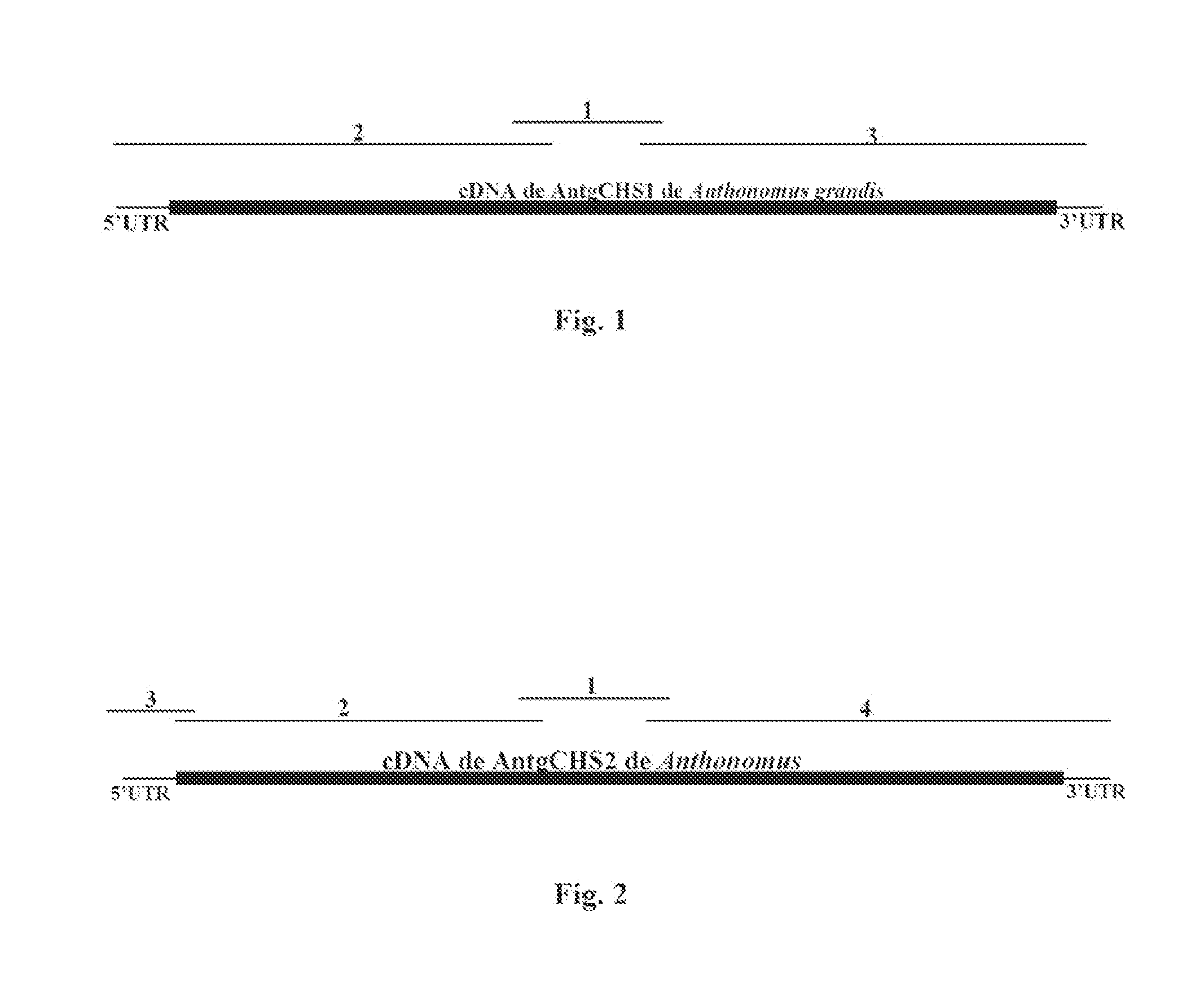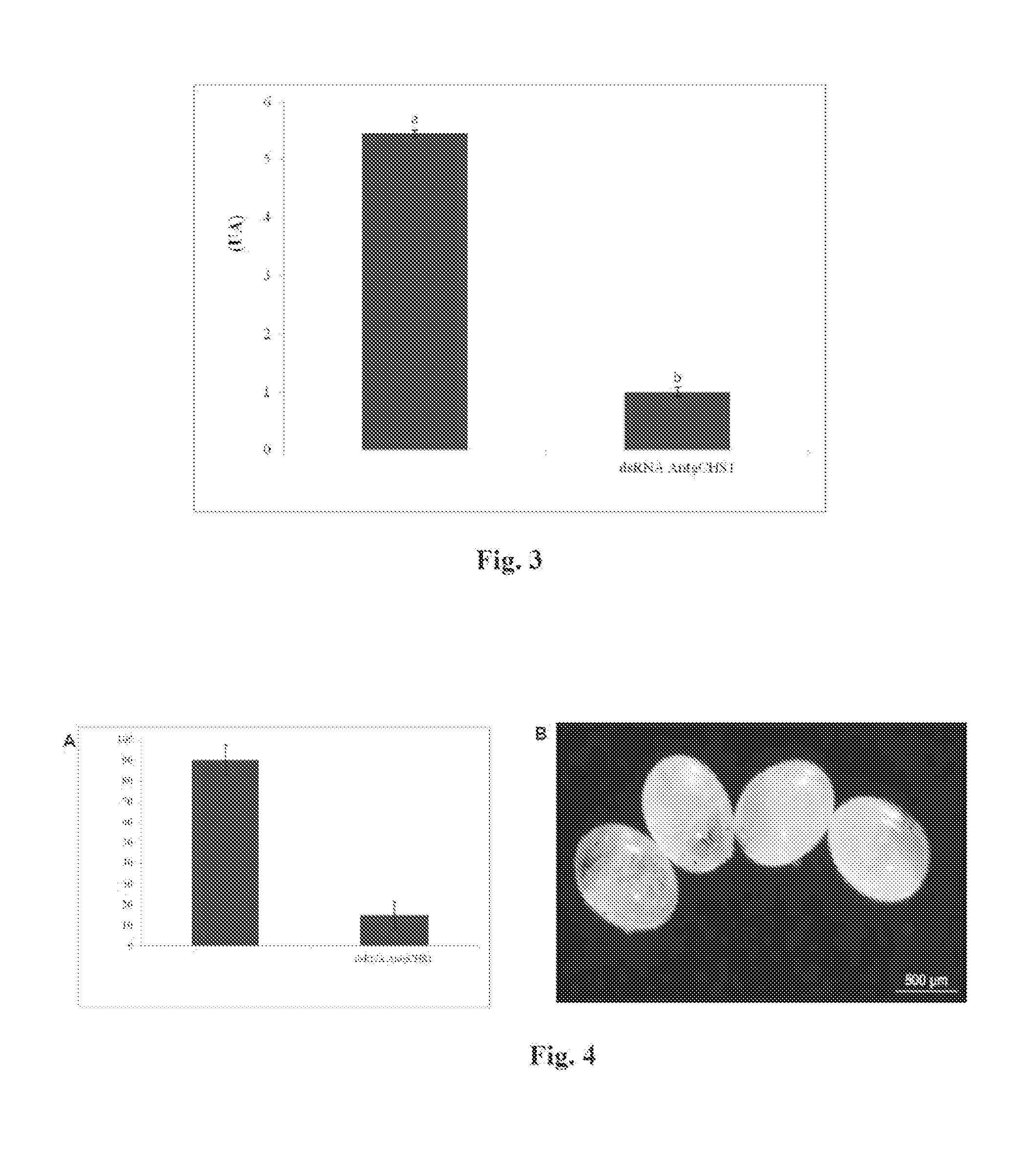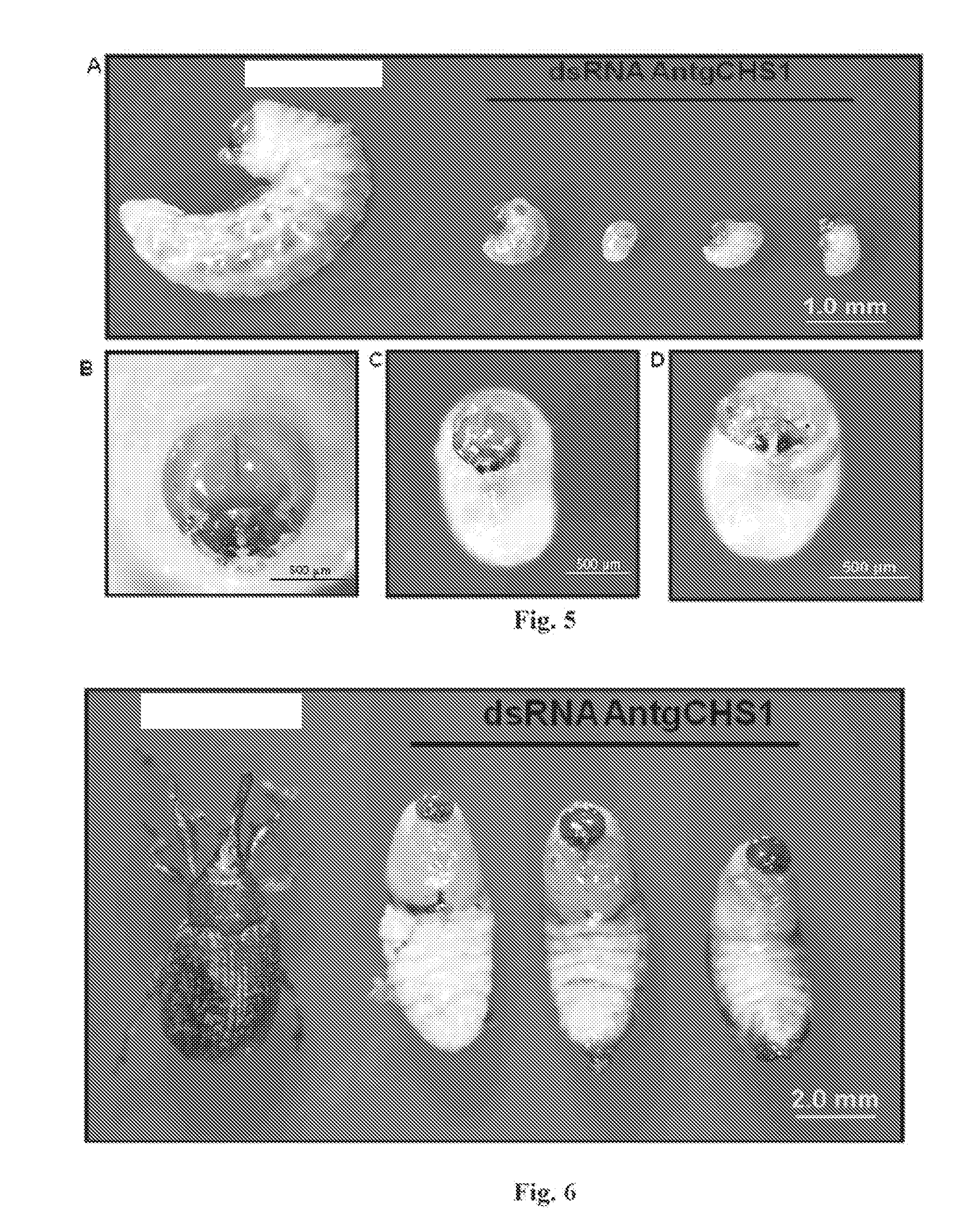Method and compositions for the genetic control of insect pests in cotton plants by chitin synthase gene silencing
a technology of chitin synthase and cotton plant, which is applied in the field of insect pest control, can solve the problems of affecting the production of most of these crops, affecting the commercialization of cotton fiber, and high toxicities of pesticides, so as to reduce or inhibit the expression of genes
- Summary
- Abstract
- Description
- Claims
- Application Information
AI Technical Summary
Benefits of technology
Problems solved by technology
Method used
Image
Examples
example 1
Identification of Nucleotide Sequence of the Enzymes Chitin Synthase 1 and Chitin Synthase 2 of Anthonomus grandis for Preparing the dsRNA
[0090]Eggs, larvae and adult insects of A. grandis were obtained from the Laboratório de bioecologia e semioquímicos de insetos da Embrapa Recursos Genéticos e Biotecnologia em Brasília-DF. The colony was fed with artificial diet as described by Monnerat et al (MONNERAT, R. G., et al., Criação massal do bicudo do algodoeiro Anthonomus grandis em laboratório. Comunicado Técnico, 46, Embrapa-Cenargen: Brasília, 2000), and kept at 26±2° C., relative humidity of 60±10% and photophase of 12 hours.
[0091]For cloning and sequencing of chitin synthase 1 and chitin synthase 2 of A. grandis the total RNA was isolated from eggs, larvae and adult insects by using Trizol (Invitrogen), the protocol indicated by the manufacturer. The cDNA was synthesized from 5 □g de RNA total using the kit Superscript II™ First-Strand Synthesis System for RT-PCR (Invitrogen) usi...
example 2
Bioassays of Microinjection of dsRNA in Anthonomus grandis
[0097]Quantified samples of double-stranded RNA (dsRNA) were used in bioassays against the boll-weevil. The dsRNA was prepared from sequences identified as described in Example 1. For the procedure of microinjection in A. grandis adult insects and larvae were previously anesthetized in ice for 10 minutes. The microinjection was carried out by using a syringe Hamilton de 10 □L, on each infects one applied 1 □L of aqueous solution contain or not containing the dsRNA. The injection to the larva was carried out in the dorsal region between the fourth and the fifth abdominal segment. In the adult insects there was a need to raise one of the elytra to expose the abdomen, site of the microinjection. After the injection, the insects were: 1) kept in standard feeding conditions on artificial diet as described by Monnerat et al (MONNERAT, R. G., et al., Criação massal do bicudo do algodoeiro Anthonomus grandis em laboratório. Comunica...
example 3
Bioassays of Microinjection of dsRNA in Anthonomus grandis for Functional Analysis of AntgCHS1
[0098]The evaluation of the silencing of AntgCHS1 on phenotype parameters of females of A. grandis was determined by bioassays of microinjection of dsRNA AntgCHS1 (SEQ ID No 2) in adult females. The quantified phenotype parameters were oviposition, viability of eggs and mortality of the adult insect. Each experimental unit consisted of 16 adult females with 48 hours of age microinjected with 200 ng of dsRNA and 8 non-microinjected adult male insects the experimental period was of 12 days. The insects were kept in small cages, where the cage floor was made from fabric to enable collection of eggs. The male insects were marked with silvery glitter to facilitate identification. The monitoring of the bioassay was made every 48 hours, a moment when water and artificial diet were offered to ad libitum. The bioassay consisted of three biological replicas with three technical replicas. The control ...
PUM
| Property | Measurement | Unit |
|---|---|---|
| volume | aaaaa | aaaaa |
| temperature | aaaaa | aaaaa |
| total length | aaaaa | aaaaa |
Abstract
Description
Claims
Application Information
 Login to View More
Login to View More - R&D
- Intellectual Property
- Life Sciences
- Materials
- Tech Scout
- Unparalleled Data Quality
- Higher Quality Content
- 60% Fewer Hallucinations
Browse by: Latest US Patents, China's latest patents, Technical Efficacy Thesaurus, Application Domain, Technology Topic, Popular Technical Reports.
© 2025 PatSnap. All rights reserved.Legal|Privacy policy|Modern Slavery Act Transparency Statement|Sitemap|About US| Contact US: help@patsnap.com



